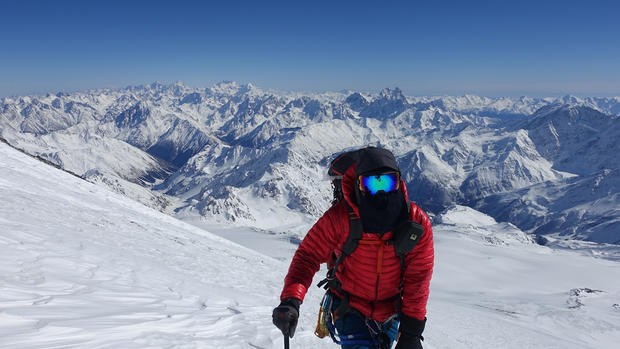Dangerous South Pole rescue mission underway for sick contractor
Rescuers are trying to reach a sick contractor at the American Research Station at the South Pole. Two planes landed at Britain's Rothera Station on the Antarctic Peninsula Monday, but the most dangerous part of their journey may still be ahead.
Flying to the South Pole is already difficult during the Antarctic summer, but when the continent is in the middle of the pitch dark of winter - as it is right now - weather conditions make flying practically impossible, reports CBS Sports' Dana Jacobson.
The twin otter planes dispatched from Canada last week will attempt the mid-winter rescue. It was done just twice before in 2001 and 2003. Sean Loutit, a former Kenn Borek Air pilot, flew on both missions.
"We faced sort of similar conditions to what the guys will be facing this week, which is cold temperatures and no light whatsoever down at the South Pole," Loutit said.
Weather permitting, only one aircraft will make the roughly 1,500-mile flight to the South Pole. The second will stay behind in case the first runs into trouble.
"The big concern of course is that you don't have enough fuel to actually go to the South Pole, turn around and come back," Loutit said.
The contractor's name and exact condition haven't been released. A second patient may also need to be evacuated.
Temperatures outside the South Pole station are hovering at minus-60 degrees Fahrenheit. While the rescue planes can withstand the extreme cold and use skis to land on the ice, flaps and other vital systems have frozen over in prior rescue missions.
Dr. Ron Shemenski was evacuated from the research facility in 2001 because of a gallbladder infection.
"So the skis heat up and when the plane stopped, it froze to the ice which we weren't expecting," Shemenski said. "So when it was time to leave, we were stuck. We couldn't get the plane loose."
- Wounded vets trek to South Pole
- Weather hampers search for 3 Canadians, small plane missing in Antarctica
Lt. Col. David Panzera of the New York Air National Guard has flown to the South Pole more than 300 times.
"It can go from blue skies... with just light clouds in the air to a total white out," Panzera said. "A very, very unsafe and very, very strange place."
"The challenge is always going to be the temperature and the weather. Those two -- most uncontrollable factors, whether it's our airplane or theirs," Panzera said.
According to the National Science Foundation, 48 people are currently at the South Pole station maintaining the facility and conducting experiments. Since 1957, fewer than 1,500 have spent the Antarctic winter there.
